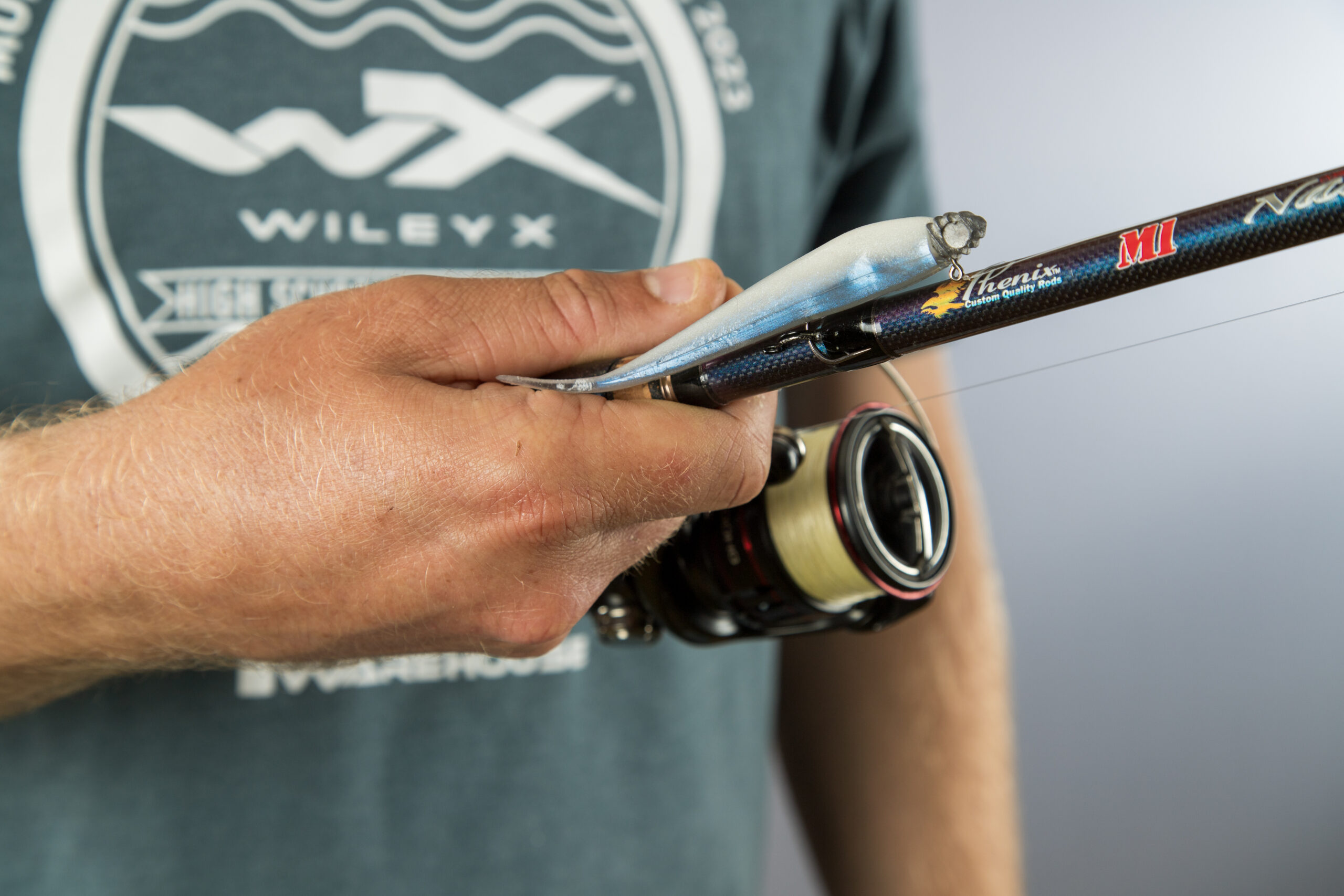The newest twist on the Damiki rig: mid-strolling

Every few years, a hot new technique emerges on the bass fishing tournament scene. If you haven’t noticed, it’s happening now. A simple minnow-style bait on a jighead was a significant player for the last two Bassmaster Classic winners and also Jacob Wheeler during his dominant win at Stage Four on Lake Guntersville during the 2023 Bass Pro Tour season.
You might have heard the technique referenced by several different names — the “Damiki rig,” “moping,” “tight-lining,” “hover strolling,” and “mid-strolling.” Regardless of what you call it, it’s tailor made for this current era of forward-facing sonar.
Most bass anglers are still learning the when and where of fishing these baits, including Mercury pro Jacob Wall. Wall was Wheeler’s closest pursuer at that Guntersville event, finishing as the runner-up, but nearly 10 pounds back.
“I got beat by the technique – (Wheeler) crushed me,” Wall recalled. “That was one of the reasons I said to myself, ‘I’m going to learn this and see what I missed.’ I’ve been spending a lot of time since then to learn it.”
In the months after that May tournament, Wall spent countless hours on Guntersville working to master the technique on one of the most pressured bass fisheries in the country.
“Those fish see a lot of baits, and by the time August rolls around, the deep fish have seen deep crankbaits, hair jigs, spoons and all of the typical ledge-fishing baits for months,” Wall explains. “I’ve learned this will get those fish to bite.”
Breaking it down

The jighead and soft-plastic fluke can be fished several different ways, hence the number of different monikers for the technique. While they’re often mentioned together (or used interchangeably), they’re all a little different.
“The most common name is the ‘Damiki rig,’ but that’s more of a vertical approach,” Wall said. “You’re dropping it down straight under the boat, almost like crappie fishing, where you keep the bait above the fish you see on your screen. I’ve been working on what I’d consider ‘mid-strolling,’ a Japanese term where you’re fishing it through the middle of the water column with a horizontal approach.”
For mid-strolling, you only need a jighead and small baitfish-imitating plastic between 3 and 5 inches. Wall prefers the Gambler FF Series Min-O with a Gambler FF Series jighead.
“The Min-O is a 4-inch bait, and I cut the tail some to make more of a pintail to give it more action,” he said. “I start with a 3/16-ounce jighead and use the Gambler Hover Hook if I need to go lighter. The whole key is the lighter the weight the better, because it allows you to track it better on your Lowrance ActiveTarget and gives the bait better freedom of movement so that the bait can roll more during the retrieve.”
According to Wall, one of the most critical parts of mid-strolling is keeping the bait above the fish.
“After watching so many fish on Guntersville and seeing how they respond, bass will rarely follow it down to the bottom,” he explained. “I watch my bait on the screen the whole time and will make a cast and engage the reel when it gets about 5 feet from the fish. You’ll have a slight tightening of the line and can start to shake and barely impart action in the bait while continuing to keep it above the fish.”
While it’s a deadly way to catch suspended bass, Wall has learned that it’s not a requirement for bass to be suspended.
“It’s easier to get those suspended fish to bite, but I’ve seen fish on the bottom or close to it will often rise to get the bait,” he said.
Wall prefers a 7-foot, 2-inch, medium-power spinning rod with a 2500-size reel spooled with 10-pound-test braid and varying fluorocarbon leader sizes when fishing the technique.
“On Guntersville, I prefer 10-pound fluorocarbon because there are a lot of bigger fish, but I’ll go down as light as 7-pound test,” Wall says. “The lighter the line you can get away with, the more natural, fluid action you’ll have from the bait.”
What Wall has learned

Wall is a true student of the game and is always looking for the next technique to try, whether it’s his affinity for huge glide baits or finesse techniques like mid-strolling.
One significant component of his success with this technique is his Lowrance ActiveTarget and paying close attention to boat positioning and distance.
“It’s a technique that I’ve done best in that 12- to 25-foot zone, and even at those depths, you need to stay back from the fish,” he said. “At a minimum, I want to be 60 feet away from them. If you get any closer, your odds of catching them go way down. I want to be back 80, 90 or even 100 feet from the fish and still have enough room to cast beyond them and get the bait to those fish.”
Wall says his best success has come by getting the bait well past the fish and allowing it to slowly enter their world instead of casting right on top of what he sees on his screen.
“You want to cast past them and for the bass first to become aware of it while it’s already moving and doing its thing in the water,” he explained. “The whole technique is about boat positioning, casting accuracy and keeping your transducer in the right position at all times. If you lose track of your bait or fish, you lose a big opportunity to get them to bite.”
No matter the term you use for the many variations of this technique, it’s become one of the hottest ways to fool pressured bass – because it works. And as bass continue to be pressured more and more all across the country, finesse techniques like the Damiki rig and mid-strolling will continue to have their day to shine.